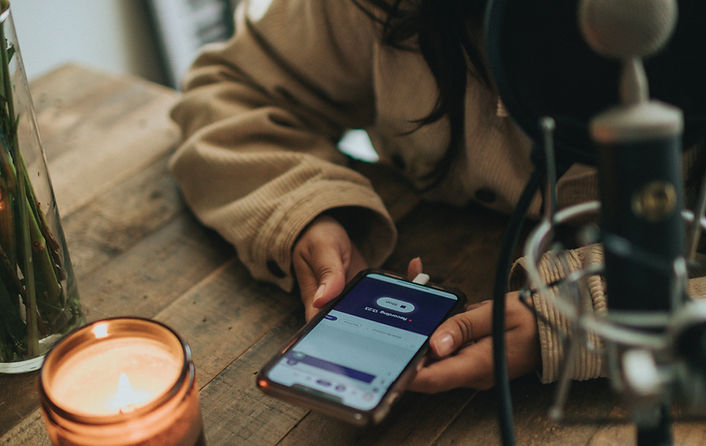
Art Management for Dummies


Podcast Notes:
Intro: - Copyright law and its influence on the field of digital art. - intriguing and always changing relationship that exists between copyright law and visual artists today. - As usual, We'll be providing you with observations, through fascinating research findings Source 1 Notes: - Digital art is in fact protected by copyright law, according to Richard Rinehart's study "Nailing down bits [electronic resource]: Digital Art and Intellectual Property." - It protects original works against unapproved distribution, display, and duplication. - digital art and intellectual property present some difficulties, and disputes can occur. - Instead of making an outright purchase, some artists and organizations choose to license their work, which can result in disagreements over terms and ownership. Source 2 Notes: - Alexandra Purcell addresses copyright issues in "Digital Exhibitions, and the Copyright Issues that Surround Them," particularly when digital pictures of artists' works are included. - This serves as a warning that, should the artist's rights not be upheld, the easy replication and distribution of digital art could result in copyright infringement. - It cannot be assumed that artists wish for their work to be seen by as many people as possible or that any digital exhibitions that institutions create using their work would be beneficial for them. - certain artists' books may be printed in bigger editions and sold commercially. institutions may find it challenging to navigate the ambiguous fair use and transformative use principles when trying to create successful digital exhibitions. Source 3 Notes: - "NFTs and copyright: challenges and opportunities" by Pnar Aglayan. - NFTs stand for the ownership or veracity of distinct digital assets, such as pictures, movies, songs, or other types of digital material. - these tokens bring up issues with contracts, property, securities, and—most importantly—copyright law… - NFTs can provide a sense of authenticity to digital art, creating a "digital original” Source 4 Notes: - The Impact of NFTs on Digital Art and Media Ownership by Aasta, our fourth source, sort of illustrates the advantages that NFTs offer to digital artists and creators. - When you think about it, NFTs actually give artists more power because they enable direct sales to collectors, which increases their control and percentage of the sale price. - Reselling on the secondary market is another source of ongoing revenue for smart contracts integrated into NFTs. Source 5 Notes: - For artists, copyright law can occasionally be a challenging journey - Reluctance to use copyrighted content can result from a lack of faith in legal interpretation. Patricia - Aufderheide's study, "Copyright and Fair Use in the Visual Arts Community," provides one illustration of this. - It examines copyright concerns in the visual arts; practitioners in this field are not well-versed in the ramifications of fair use for their creations. professionals can better understand the consequences of fair usage by using codes of best practices. Source 6 Notes: - Carolyn Guertin highlights how copyright regulations might stifle artistic innovation in the digital arts. - Copyright laws have the potential to restrict the utilization of preexisting works in the production of new art, and to foster a "permission culture" that dissuades artists from producing original works. - The text highlights Disney's practice of extending copyright protections to safeguard its renowned character, Mickey Mouse, against emulation and appropriation. Another illustration would be Oswald the Lucky Rabbit, who is currently in the public domain and so available for use by everyone. However, Disney would, of course, pursue legal action against anyone else who used the character. Source 7 Notes: - In the study "What are the copyright implications of NFTs?" by Gregory Chinlund. The use and distribution of Non-Fungible Tokens may give rise to copyright infringement, even though the tokens themselves do not violate copyright laws.
Episode 6: the world of copyright law and its impact on the digital art scene
Sources
Aufderheide, P., Sinnreich, A., & Silvernail, C. (2019). Norms-Shifting for Digital and Online Arts Practice: Copyright and Fair Use in the Visual Arts Community. Visual Arts Research, 45(2), 91–108. Çağlayan Aksoy, P., & Özkan Üner, Z. (2021). NFTs and copyright: Challenges and opportunities. Journal of Intellectual Property Law & Practice, 16(10), 1115–1126. https://doi.org/10.1093/jiplp/jpab104 Chinlund, G. J., & Gordon, K. S. (n.d.). What are the copyright implications of NFTs? | Reuters. Retrieved November 2, 2023, from https://www.reuters.com/legal/transactional/what-are-copyright-implications-nfts-2021-10-29/ Guertin, C. (n.d.-a). Bloomsbury Collections—Art and Copyright. Retrieved October 16, 2023, from https://www-bloomsburycollections-com.myaccess.library.utoronto.ca/monograph-detail?docid=b-9781509934287&pdfid=9781509934287.ch-005.pdf&tocid=b-9781509934287-chapter5 Guertin, C. (n.d.-b). Bloomsbury Collections—Digital Prohibition. Retrieved October 16, 2023, from https://www-bloomsburycollections-com.myaccess.library.utoronto.ca/monograph?docid=b-9781628927856 Kell, T. (2022, June 8). The tangled truth about NFTs and copyright. The Verge. https://www.theverge.com/23139793/nft-crypto-copyright-ownership-primer-cornell-ic3 Purcell, A. (2015). Artists’ Books, Digital Exhibitions, and the Copyright Issues that Surround Them. Art Documentation: Journal of the Art Libraries Society of North America, 34(2), 321–329.https://doi.org/10.1086/683387 Singh, A. (n.d.). (23) The Impact of NFTs on Digital Art and Media Ownership | LinkedIn. Linkedin. Retrieved November 2, 2023, from https://www.linkedin.com/pulse/impact-nfts-digital-art-media-ownership-aastha-singh/
